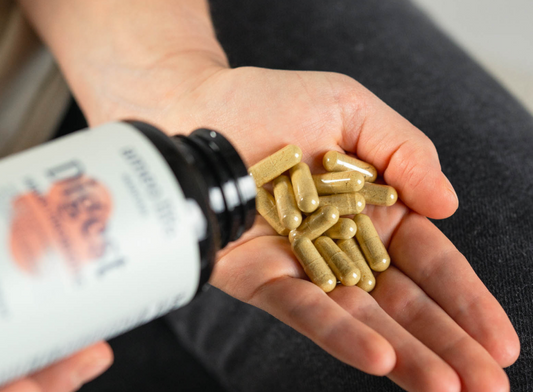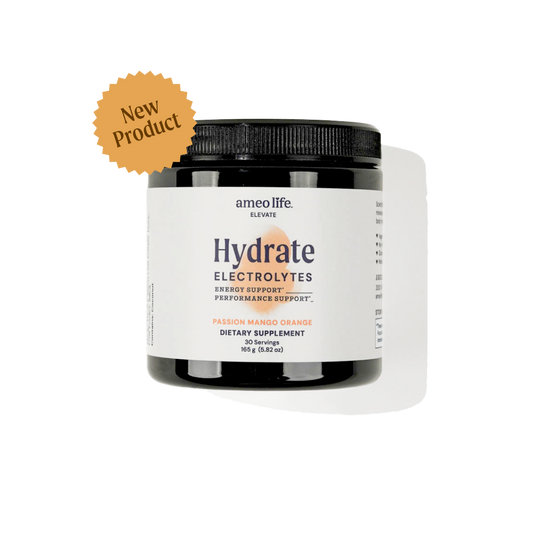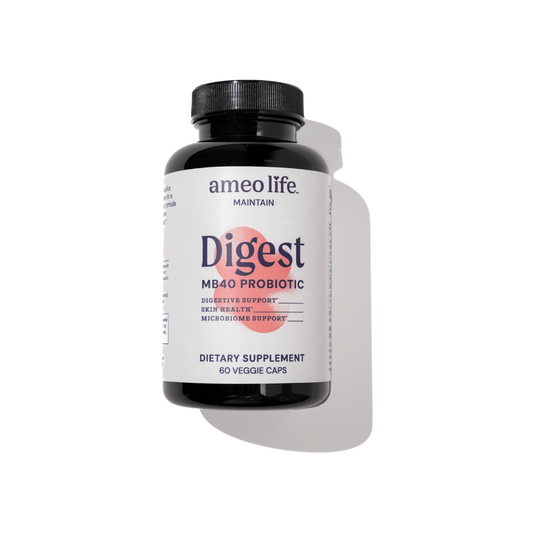The Hidden Dangers of Mouthwash

Why Mouthwash Matters? Let's further explore our digestive systems
By looking at some common personal care products used in American households. It is extremely important to gain a further understanding of how these products impact the overall decline of our digestive health.
These products have become staples in our daily lives, with millions of households across the globe commonly using them.
Today we are going to take a deeper dive into the mouthwashes found on the shelves of our grocery stores and pharmacies.
Through Bright and Cheery Marketing Campaigns
We have been led to believe that mouthwash eliminates the bad bacteria in our mouth, and leaves us with fresh breath and a bright white smile. Subtle promises of increased confidence and attractiveness drive these ad campaigns - I mean heck, someone may even want to give you a kiss with that fresh breath and glowing white smile!
However, is the promise of 'minty fresh breath' coming at a cost to our digestive systems and overall health?
Let's take a look at the ingredients found in the most common mouthwashes. It’s important that you fully understand what you are putting in your body, as these products do affect your digestive system!
Here is a label of one of the most commonly used mouthwashes.

Personally, I find this label deeply concerning.
Mouthwash Ingredients: Let’s Dive In and See What They Really Mean For the Body
Sodium Fluoride : Sodium Fluoride is a laboratory produced inorganic compound. Often used in drinking water, toothpaste and tooth whiteners, sodium fluoride is also a common ingredient in pesticides and rat poison!
Fluoride exposure, over time, can cause nausea, vomiting, diarrhea, abdominal pain, loss of appetite, twitching, tremors, and convulsions. Deposits of fluoride in the bones and teeth may also lead to a condition known as fluorosis.
Are these results also linked to digestive issues?
Something to think about ...
Let's look further at the other ingredients
Alcohol : Many mouthwashes contain 26.9% alcohol. TMouthwash contains a higher percentage of alcohol than most beer, wine, and liquors. Alcohol helps stabilize the mouthwash formula. High concentrations of alcohol can cause dry mouth, worsening bad breath and contributing to germ growth. Sorbitol : Sorbitol is a sugar alcohol that is commonly found in fruits and plants. When sorbitol is unabsorbed, it retains water in the large intestine and stimulates peristalsis of the intestine by exerting diuretic, laxative and cathartic effects.
Sorbitol used over time can result in bloating and diarrhea.
Methyl salicylate
Often associated with the "minty" flavor in mouthwash, acts as a flavoring agent. Swallowing, inhaling, or absorbing methyl salicylate through the skin is considered harmful. This substance is highly toxic to children.
Methyl salicylate comes with the warning that if swallowed, call a doctor or poison control center right away.
Phosphoric Acid
Phosphoric acid is a hazardous and toxic compound developed as a colorless, odourless crystalline liquid for use in soda pops (for its pleasing acidic taste.) Phosphoric acid is also used in fertilizers, detergents and household cleaning products.
People developed saccharin as an artificial sweetener, and studies have linked it to cancer.
Disodium Phosphate
Disodium phosphate is an artificial salt added to foods and cosmetics as a preservative and flavour enhancer. Mouthwash uses disodium phosphate as the buffering agent to help maintain the product's acidic pH.
Sucralose
66Sucralose is an artificial sweetener made in a chemical process where hydrogen-oxygen groups are replaced with chlorine atoms. Consuming too much sucralose can cause diarrhea, bloating and gas.
Red#40 : Red #40 is a product derived from petroleum and is actually a banned substance in the UK. Red #40 is a food dye and goes by several names, including FD&C Red 40.
Mouthwash uses disodium phosphate as the buffering agent to help maintain the product's acidic pH.
Blue#1 : Often referred to as Brilliant Blue FCF, Blue #1 is a synthetic laboratory produced compound used as a colouring agent in processed foods, medications, dietary supplements and cosmetics.
Blue#1 has been known to cause allergic reactions such as itching, hives, and more serious reactions including respiratory distress and shock.
Looking at the ingredients above, do you still feel good about putting these chemicals in our body?
What does this have to do with digestive health?
Simply holding these chemicals in your mouth for a short period allows them to be absorbed and circulated throughout your body, even though mouthwash products recommend not swallowing. Over extended periods of time they make their way into the digestive system and slowly build up.
Looking at the effects of these chemical ingredients we see:
- Gas
- Bloating
- Diarrhea
- Hives
- Swelling
- Itching
Are these not common effects of digestive issues?
Many people relate digestive issues to the foods that they eat, however, this is not always the case. We need to be paying very close attention to everything that we are using, both in and on our bodies.
The more we use these harmful products, the more we are going to experience the long term effects of these chemicals building up in our bodies over time.
We need to take control of our health, one smart decision at a time.
Our bodies will thank us!
If you enjoy using mouthwash as a part of your daily routine, you're in luck.
At Ameo Life we have dedicated ourselves to developing natural products that are free of harmful and toxic chemicals.
Take a look at our ingredients :
Ameo Life Silver Mint Mouth-Rinse contains only the finest natural ingredients:
- Distilled Water
- pH Structured Silver Solution
- Natural Peppermint Essential Oil
- Concentrated Trace Minerals
- Xylitol
- Stevia
This is what you should desire to see on a label, as compared to laboratory created chemicals that slowly work against the body over time.

Ameo Life Silver Mint Mouth-Rinse is naturally formulated to taste great and is also free of any toxic chemicals. It can even be safely swallowed!







